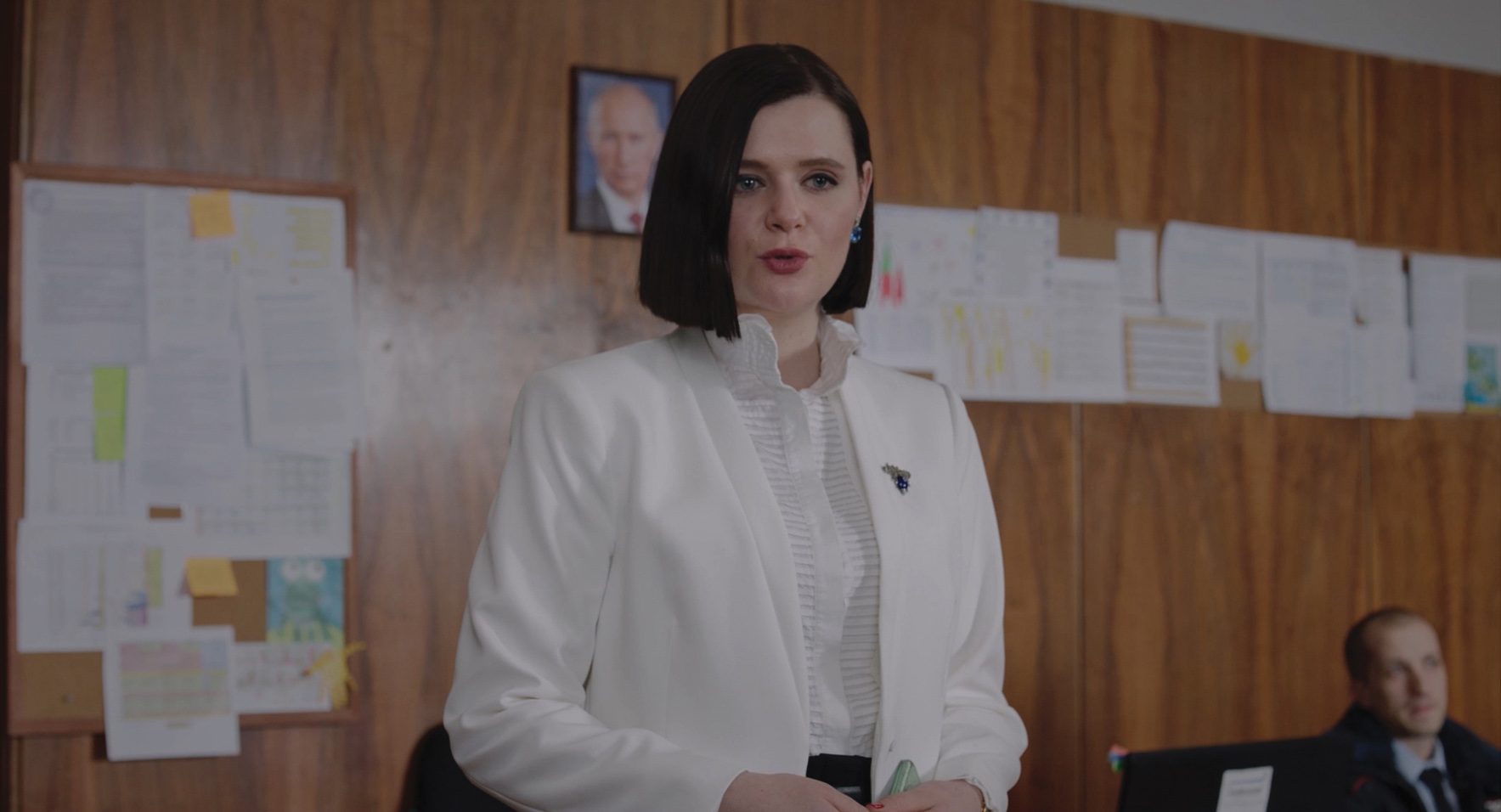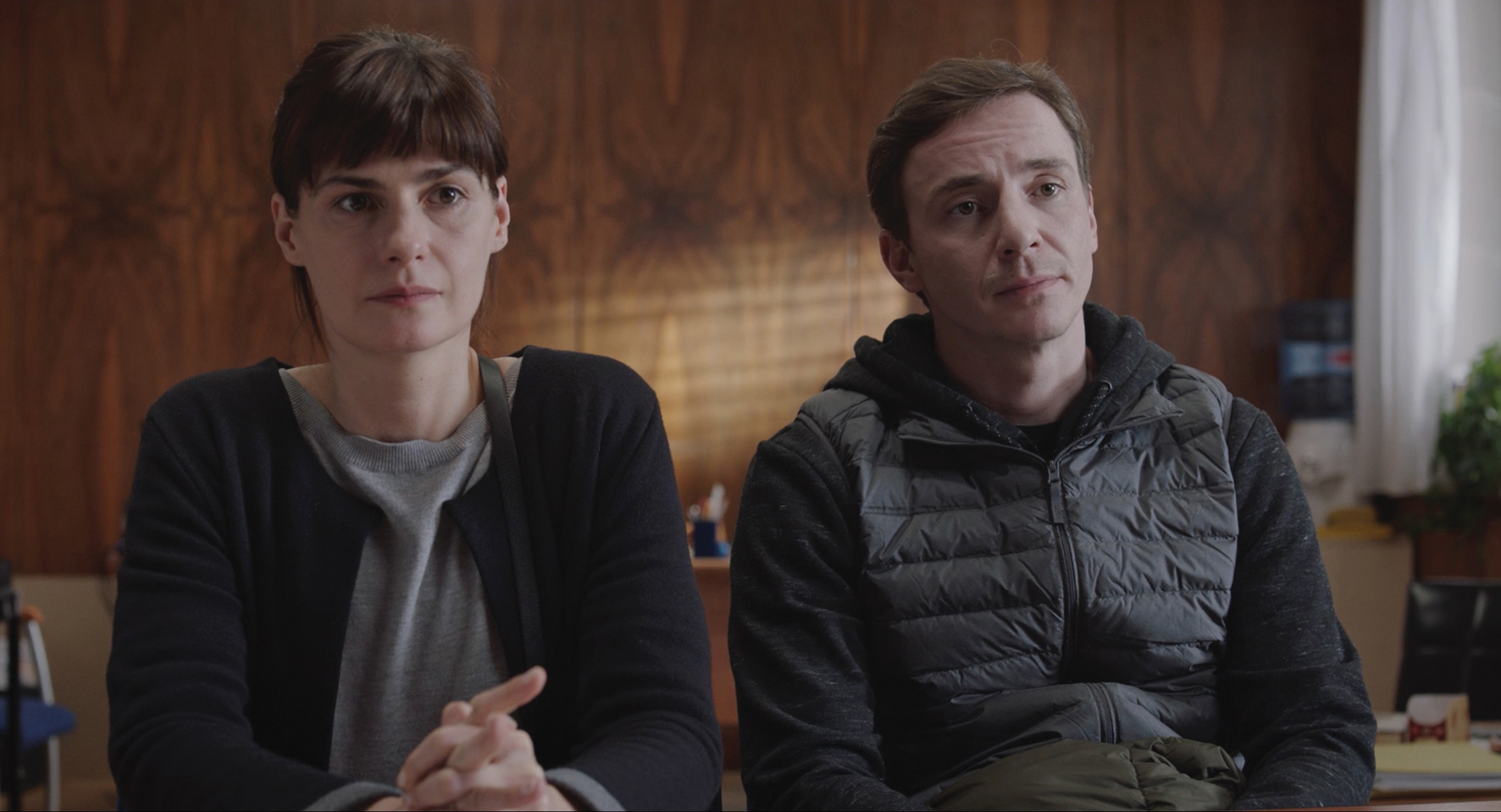Dinner with À marche forcée [On the March]
Interview with Vladilen Vierny, director of À marche forcée [On the March]
What was the starting point for A marche forcée?
In the spring of 2017, when I was living in Russia, I found myself at an unauthorized protest march organized by the opposition in the center of Moscow. I was surprised to see many teenagers there who seemed to me to be very determined. Other protests took place during the year. The rise of a well-informed young, politicized generation was a new phenomenon to Russian society. In some schools special classes were added on days where there were protests in order to prevent the students from going. Quickly I felt that basing my story in a school on the day of a protest would allow me to talk about the power struggle that can occur between an academic institution, teenagers and their parents.
What interested you in the character of a young adolescent overwhelmed by the turn of events, by the adults’ reactions?
Kirill, the adolescent, is caught in the crossfire: the school and his family circle. Even if the parents stand up for their child, they are also looking to avoid a head on confrontation with the director. The parents engage in the art of compromise and a system of façades is quickly established. If Kirill is overwhelmed by the turn of events, it’s because he doesn’t yet play this game of façades which allows a good number of adults to survive in the current system in Russia.
Can you tell us about the making of the film, from the scenario to post-production?
From the onset of writing, with the co-script writer, we thought about each scene in great detail, particularly the actions of the characters, the distance between them, if they were seated or standing up, at what level, etc. Therefore, the balance of power that is set in motion is established not just through the dialogue but by the position and gestures of the actors. We had six days for shooting which was enough to do each scene with precision. Working in a closed setting with several professional actors with scenes with lots of dialogue was a bit of a challenge for me since up until now I had directed short films with one character and little text. The question of theater and playacting that the adults engage in is central to the film: I tried to reinforce this idea by creating a parallel with the children’s show that we see before the next to last scene. The set design director came up with many elements in the décor and props to reinforce this idea visually. With the director of photography, we tried to convey this idea of theater through the script breakdown: the camera, often frontal and close to the actors, would capture the characters as they entered the frame as if they were going onto the stage of a theater. We edited the film fairly rapidly right before the first lockdown. The sound editing was done remotely, and we were able to finish all the rest of the post-production during the summer.
We’d like to keep track of this character, learn about his life, watch him grow up. Might there be a sequel to A marche forcée? A feature length film, perhaps?
While writing and preparing the film, I thought it might indeed be possible to make a feature length film: besides the teenager, I find each character interesting and a bearer of truth. However, a story and the system of characters remain, in my eyes, restricted to the pace of a film and a concept of its direction. Transposing the path of these characters into a long format would probably weaken the intensity that the short format offered.
What do you think the future holds for short films?
For me, each story has a duration that is its own. I’d like to see some feature length filmmakers come back to making shorts from time to time because that’s just the right amount of time to tell their story. Anyways, I think the short film will continue to be watched a lot, perhaps more online than previously.
If we were to go back into lockdown, what cultural or artistic delights would you recommend for alleviating our boredom?
Reading and nature!
À marche forcée [On the March] is being shown in the National Competition F9.










